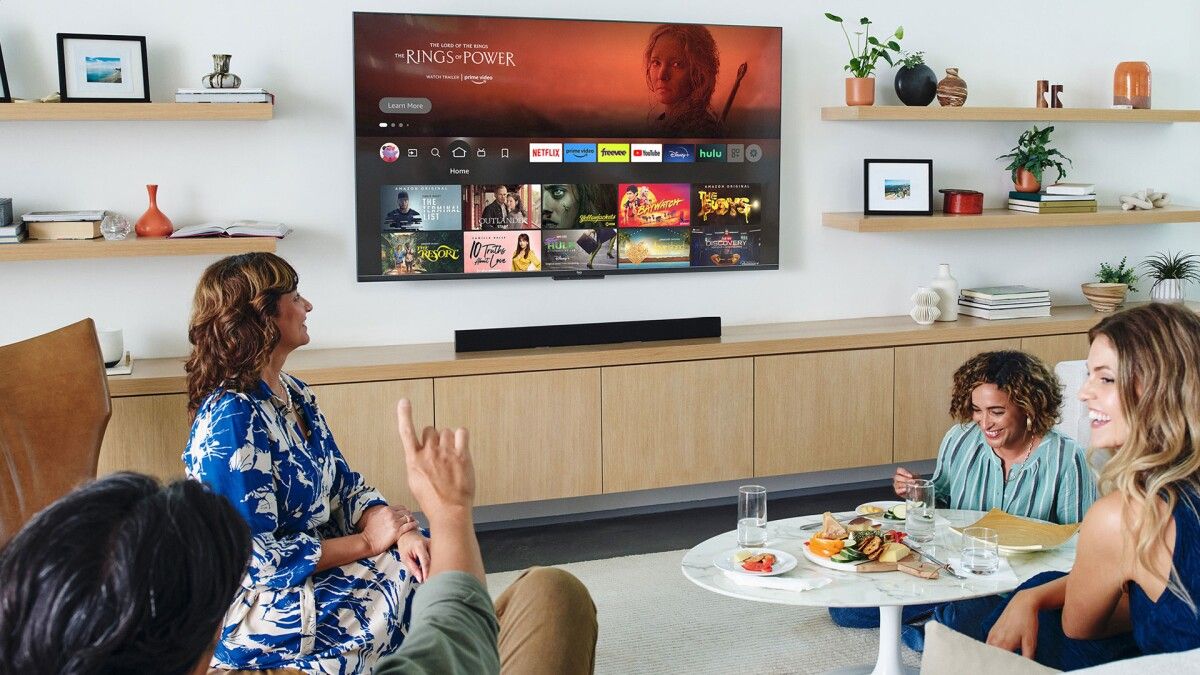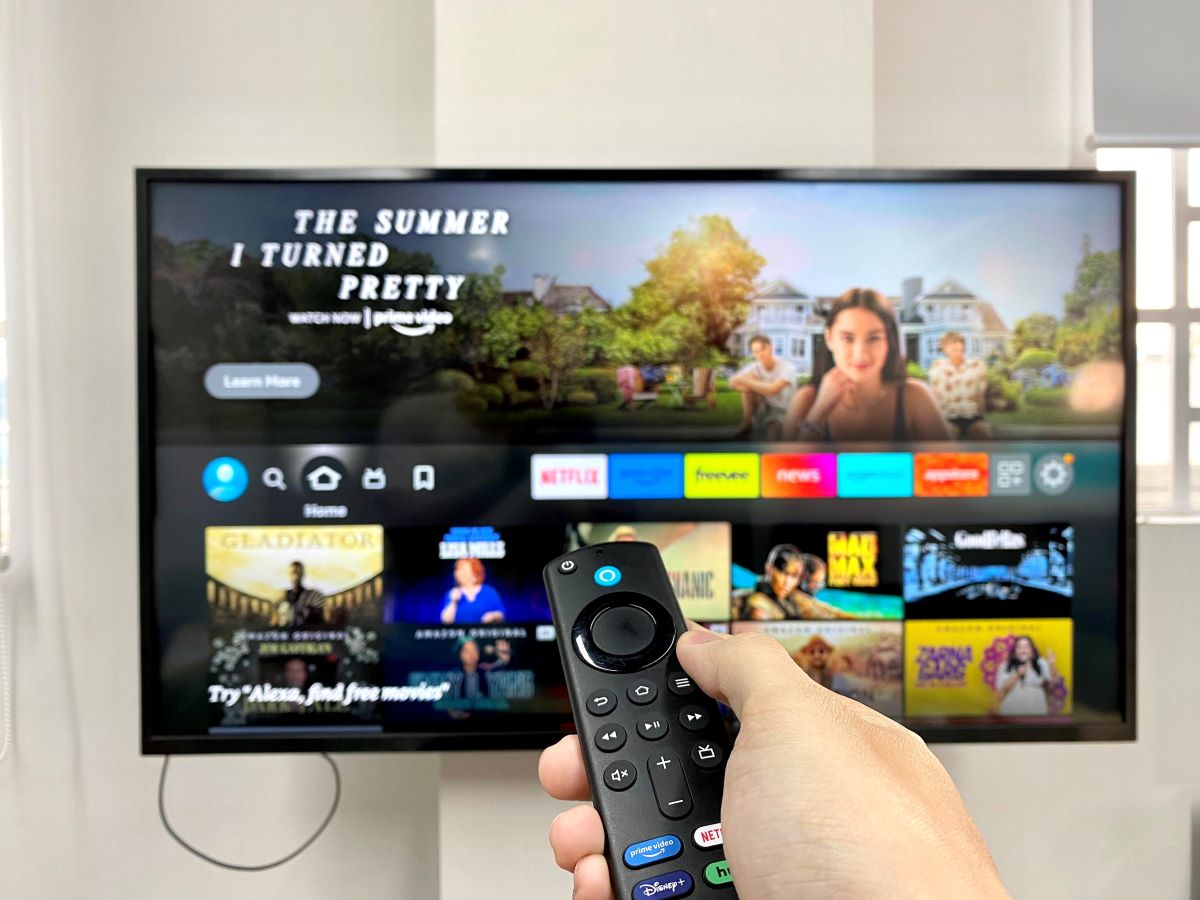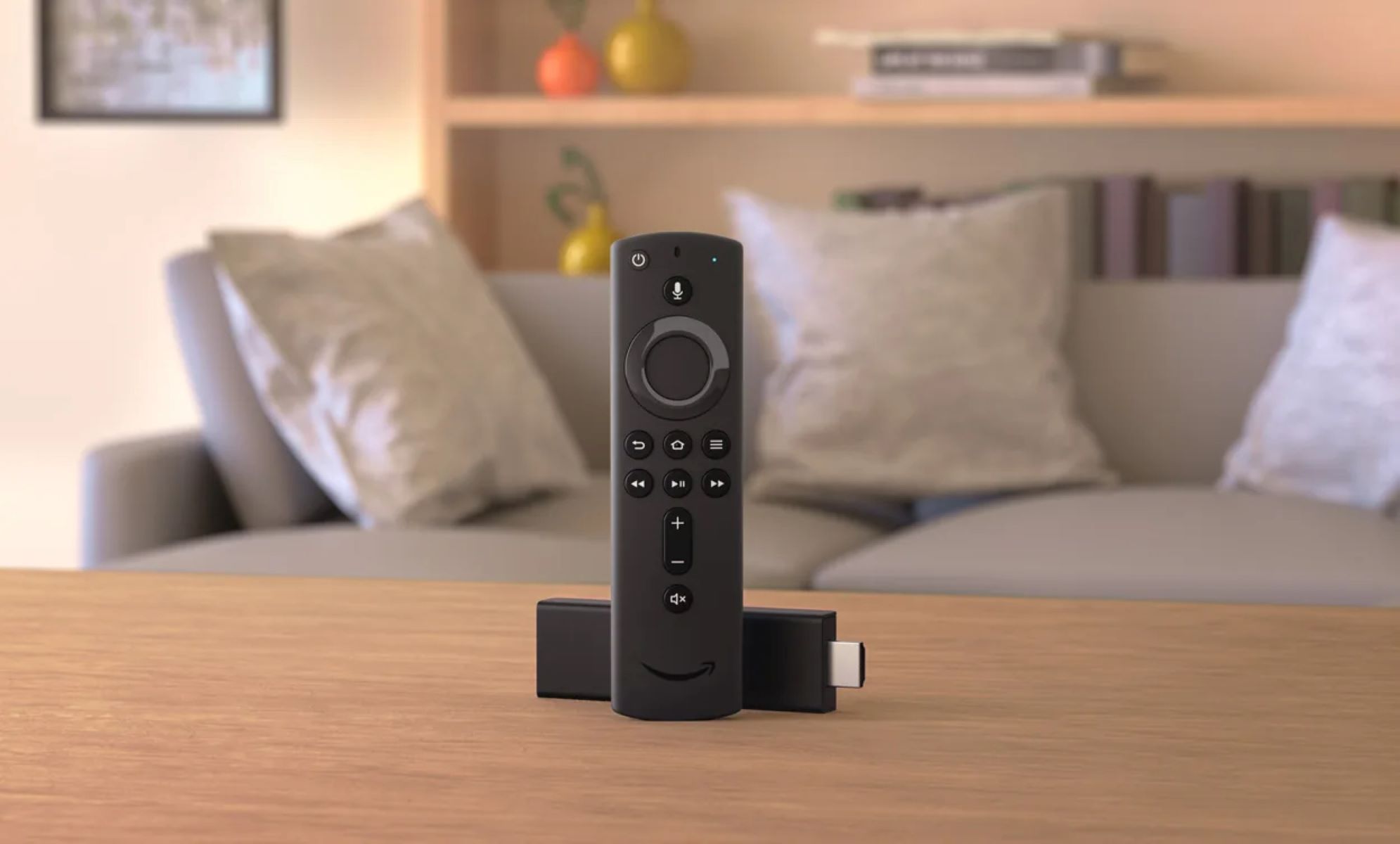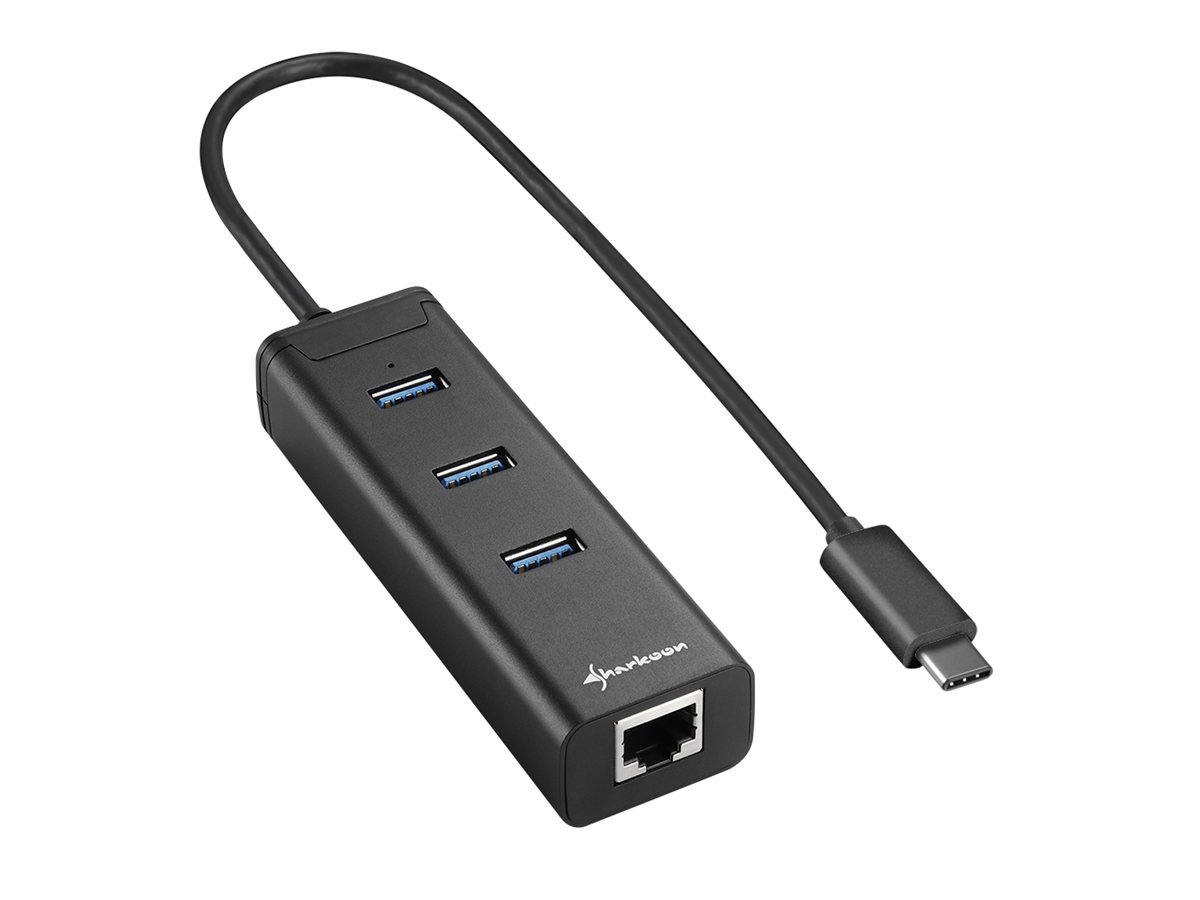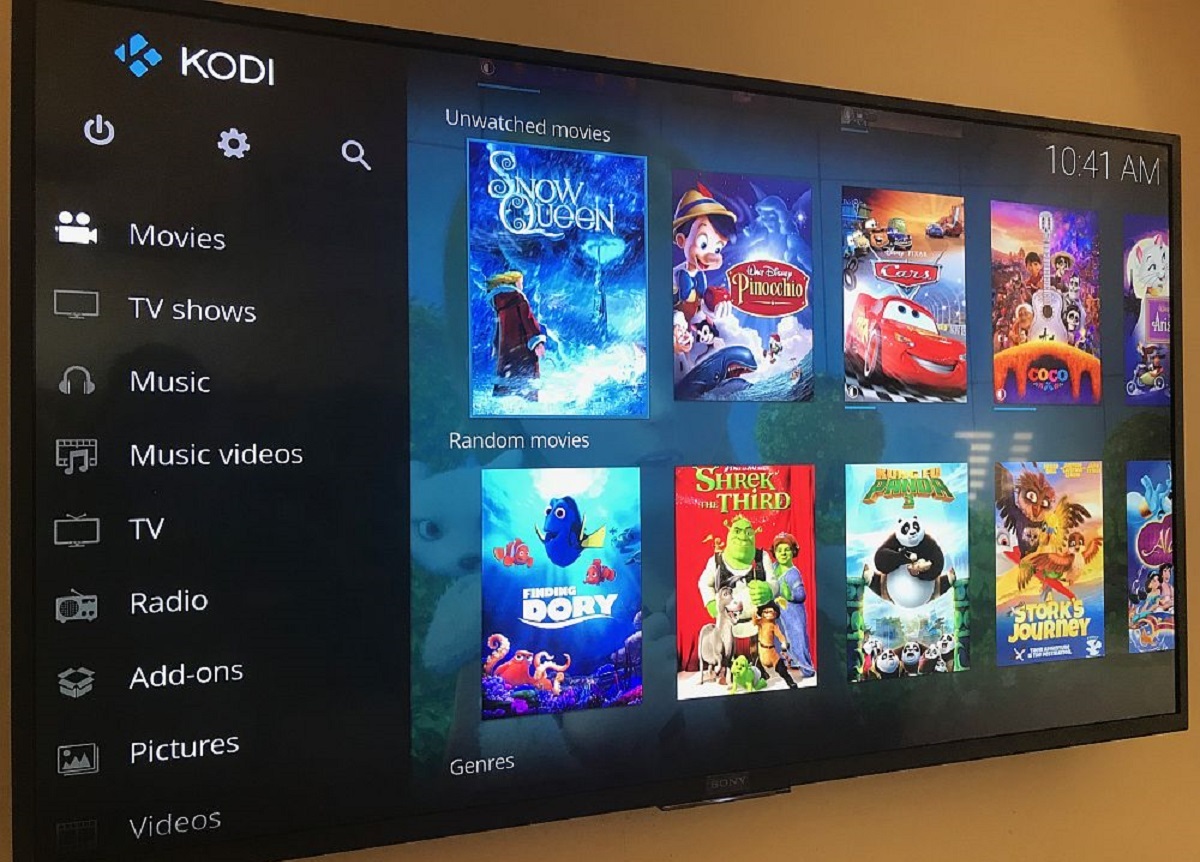Introduction
Streaming devices have revolutionized the way we consume entertainment, offering a world of content at our fingertips. One popular streaming device that has gained immense popularity is the Firestick. But what if you have a non-smart TV? Can you still enjoy the benefits of a Firestick? The answer is a resounding yes!
A Firestick is a small electronic device that plugs into your TV’s HDMI port and allows you to access various streaming services and apps. It essentially turns your regular TV into a smart TV, giving you access to a vast array of movies, TV shows, music, and more.
Using a Firestick on a non-smart TV opens up a whole new world of entertainment possibilities. You no longer have to rely on cable or satellite subscriptions to access your favorite shows and movies. With a Firestick, you can easily stream content from popular platforms like Netflix, Amazon Prime Video, Hulu, Disney+, and many others.
In this article, we will guide you through the process of using a Firestick on a non-smart TV. We will discuss the benefits of using a Firestick, the necessary requirements, and provide a step-by-step guide to get you up and running in no time. So, let’s dive in and unlock the full potential of your non-smart TV with a Firestick!
What is a Firestick?
A Firestick is a small, portable streaming device developed by Amazon. It’s shaped like a small USB stick and connects to your TV’s HDMI port, allowing you to access a wide range of streaming content. The device is powered by Amazon’s Fire OS and provides a user-friendly interface for navigating and streaming your favorite shows, movies, music, and more.
The Firestick offers a convenient solution for those who want to transform their non-smart TVs into smart TVs. It brings the power of popular streaming apps and services right to your fingertips, eliminating the need for cable or satellite subscriptions. With a Firestick, you can access popular streaming platforms like Netflix, Amazon Prime Video, Hulu, Disney+, and many others.
One of the key features of the Firestick is its voice-controlled remote. With the included Alexa voice remote, you can easily search for content, launch apps, control playback, and even control compatible smart home devices. This hands-free, intuitive control makes navigating and using the Firestick a breeze.
Moreover, the Firestick offers seamless integration with Amazon’s ecosystem. If you’re an Amazon Prime member, you’ll have access to exclusive content and benefits, including Prime Video, Prime Music, and more. The Firestick also supports additional apps and games, allowing you to customize your streaming experience to suit your preferences.
The Firestick is a cost-effective and versatile streaming device that provides an affordable alternative to purchasing a smart TV. It’s a compact and portable solution that can be easily moved between TVs or taken on the go. With its powerful hardware and software capabilities, the Firestick delivers smooth streaming, crisp visuals, and immersive audio, enhancing your entertainment experience.
In summary, a Firestick is a small but powerful streaming device that allows you to transform your non-smart TV into a smart TV. It offers a wide range of streaming content, a user-friendly interface, voice control, and seamless integration with Amazon’s ecosystem. With a Firestick, you can enjoy the benefits of a smart TV without the need for expensive upgrades.
Benefits of Using a Firestick on a Non-Smart TV
The Firestick provides numerous benefits for users who wish to enhance their non-smart TVs with smart functionality. Here are some of the key advantages:
- Access to a wide range of streaming services: With a Firestick, you can enjoy the vast libraries of popular streaming platforms like Netflix, Amazon Prime Video, Hulu, HBO Max, and many more. This gives you access to a diverse selection of movies, TV shows, documentaries, and original content.
- Convenient and user-friendly interface: The Firestick interface is designed with simplicity and ease of use in mind. Navigating through different apps and content is quick and intuitive, allowing you to find and stream your favorite shows and movies effortlessly.
- Enhanced audio and video quality: The Firestick supports high-definition (HD) and even 4K Ultra HD streaming, depending on the model you choose. This means you can experience your favorite content in stunning clarity and detail, accompanied by immersive sound.
- Portability and versatility: The Firestick is a compact and portable device that can be easily connected to any HDMI-enabled TV. You can take it with you when traveling or visiting friends and family, ensuring you never miss out on your favorite shows.
- Personalized recommendations and preferences: The Firestick learns your viewing habits and preferences over time, providing personalized recommendations based on your interests. This makes it easier to discover new content that matches your taste.
- Voice control and smart home integration: The Firestick’s included Alexa voice remote allows you to control the device with your voice. You can search for shows, launch apps, control playback, and even control compatible smart home devices, creating a seamless and convenient smart home experience.
- Cost-effective solution: Instead of investing in a new smart TV, which can be expensive, the Firestick offers a more affordable solution to add smart functionality to your non-smart TV. It provides a wide range of features and benefits at a fraction of the cost.
By using a Firestick on your non-smart TV, you can enjoy the convenience of streaming your favorite content, access a wide range of apps and services, and transform your television into a smart entertainment hub. It’s a cost-effective and flexible solution that brings the best of streaming technology to any TV.
What You Need to Use a Firestick on a Non-Smart TV
To use a Firestick on a non-smart TV, you’ll need a few basic requirements. Here’s what you’ll need to get started:
- A non-smart TV with an HDMI port: Ensure that your TV has an available HDMI port. The Firestick needs to be connected to this port to transmit audio and video signals to your TV.
- Stable internet connection: A reliable internet connection is crucial for streaming content on the Firestick. Make sure you have access to a Wi-Fi network with sufficient speed to support smooth streaming.
- A power source: The Firestick requires a power source to operate. It comes with a power adapter that needs to be plugged into an electrical outlet. Make sure you have a nearby outlet or power strip to connect the Firestick.
- An Amazon account: You’ll need an Amazon account to set up and activate your Firestick. If you don’t have one, you can easily create an account on the Amazon website.
- Firestick remote or compatible device: The Firestick comes with a remote control for navigation and control. However, if you prefer, you can also use the Amazon Fire TV app on your smartphone or tablet as a remote.
- Optional: Ethernet adapter or extender: While the Firestick can connect to the internet via Wi-Fi, if you prefer a wired connection for more stable performance, you can purchase an Ethernet adapter or extender that is compatible with the Firestick.
With these basic requirements in place, you have everything you need to start using a Firestick on your non-smart TV. The setup process is straightforward and can be completed in just a few simple steps. Once you have all the necessary components, you’re ready to turn your non-smart TV into a smart entertainment hub!
Step-by-Step Guide to Using a Firestick on a Non-Smart TV
Setting up and using a Firestick on a non-smart TV is a straightforward process. Follow these step-by-step instructions to start enjoying the benefits of a smart TV experience:
- Connecting the Firestick to Your Non-Smart TV: Plug the Firestick into an available HDMI port on your TV. Make sure to remember which HDMI input you used for future reference.
- Powering Up the Firestick: Connect the power adapter included with the Firestick to the device and plug it into a power outlet or power strip. The Firestick will power up automatically.
- Connecting to Wi-Fi: On your TV, select the corresponding HDMI input you connected the Firestick to. Follow the on-screen prompts to connect the Firestick to your Wi-Fi network. Enter your Wi-Fi credentials and wait for the connection to be established.
- Setting up the Firestick Remote: Once connected to Wi-Fi, the Firestick will prompt you to set up your remote. Follow the instructions to pair the remote with your Firestick. Alternatively, you can use the Fire TV app on your smartphone or tablet as a remote.
- Installing Apps and Streaming Services: Access the main menu on your Firestick by pressing the home button on the remote. From the menu, navigate to the “Apps” section and explore the available apps and streaming services. Install the ones you want to use by selecting and downloading them.
- Navigating and Using the Firestick Interface: Once you have installed your desired apps, you can access them from the main menu. Use the navigation buttons on the Firestick remote to move through the interface, select apps, and browse through content. Enjoy streaming your favorite shows, movies, and music!
That’s it! By following these simple steps, you can easily set up and start using a Firestick on your non-smart TV. Remember to keep your Firestick updated with the latest software versions to ensure optimal performance and access to new features. Now you can enjoy the vast world of streaming content right on your non-smart TV with the convenience and ease of a Firestick.
# 1. Connecting the Firestick to Your Non-Smart TV
The first step to using a Firestick on a non-smart TV is to connect the device to your television. Follow these simple instructions:
- Locate the HDMI port on your TV: Look for the HDMI ports on the back or side of your TV. They are usually labeled with “HDMI” or have an HDMI icon next to them. Note down which HDMI port you will be using for the Firestick.
- Insert the Firestick into the HDMI port: Take the Firestick device and carefully insert it into the chosen HDMI port on your TV. Ensure it fits securely and is fully inserted.
- Power up the Firestick: Connect the power adapter provided with the Firestick to the device’s micro USB port. Plug the other end of the power adapter into an electrical outlet or a power strip.
- Select the appropriate HDMI input: On your TV remote, locate the input/source button. Press it repeatedly until you see the input associated with the HDMI port into which the Firestick is connected. The screen should now display the Firestick’s setup screen.
- Pair the remote (optional): If your TV doesn’t provide power to the HDMI ports when the TV is turned off, you may need to pair the Firestick remote with the device. Point the remote towards the Firestick and press the home button for about 10 seconds or until the device recognizes the remote.
Once you have successfully connected the Firestick to your non-smart TV and powered it up, you are ready to proceed with the setup process and start enjoying all the features and content it has to offer. Keep in mind that different TV models may have slightly different procedures for selecting HDMI inputs, so consult your TV’s user manual if needed.
# 2. Powering Up the Firestick
After connecting the Firestick to your non-smart TV, the next step is to power up the device. Here’s how:
- Locate the Power Adapter: Take the power adapter that came with your Firestick. It has a micro USB port on one end that connects to the Firestick, and a standard USB or wall plug on the other end.
- Connect the Power Adapter: Plug the micro USB end of the power adapter into the corresponding port on the Firestick. Ensure it is securely plugged in.
- Plug in the Power Adapter: Insert the other end of the power adapter into a power outlet or a power strip. Make sure the outlet is easily accessible and located near your TV.
- Powering On: Once the Firestick is connected to the power source, it will automatically power on. You will see the Firestick logo on your TV screen as it boots up.
Typically, the Firestick will power up within a few seconds. If you don’t see any activity on the screen, double-check the connections and make sure the power outlet is functioning properly.
It’s worth noting that some TVs have HDMI ports that provide power to connected devices even when the TV is turned off. In such cases, the Firestick will turn on automatically when you power on the TV. However, if your TV doesn’t supply power to the HDMI port when the TV is off, you may need to use the Firestick remote to turn on the device by pressing the home button.
With the Firestick successfully powered up, you can move on to the next steps of connecting the device to your Wi-Fi network and setting it up for use on your non-smart TV.
# 3. Connecting to Wi-Fi
Once you have powered up the Firestick, the next step is to connect it to your Wi-Fi network. Here’s how to get it done:
- Select the language: On the Firestick home screen, select your preferred language using the Firestick remote.
- Connect to Wi-Fi: Next, you’ll be prompted to connect to your Wi-Fi network. Use the remote to select your network from the available options.
- Enter Wi-Fi credentials: If your Wi-Fi network is password protected, you’ll be prompted to enter the network password. Use the remote to navigate the on-screen keyboard and input the correct characters.
- Join the network: Once you have entered the password, select the “Connect” or “Join” button to connect the Firestick to your Wi-Fi network.
- Wait for the connection: The Firestick will now attempt to establish a connection to your Wi-Fi network. This process may take a few moments. Once the connection is successfully established, you will see a confirmation message.
If you are having trouble connecting to your Wi-Fi network, double-check that you have entered the correct password. Ensure that your Wi-Fi network is functioning properly and that other devices are able to connect to it without any issues.
If the Firestick is unable to connect to your Wi-Fi network, you may need to troubleshoot your network settings or consider contacting your internet service provider for assistance. It’s also worth trying to move the Firestick closer to your Wi-Fi router or using a Wi-Fi extender for better signal strength.
Once your Firestick is successfully connected to Wi-Fi, you can proceed with the setup process and start enjoying the wide range of streaming content your device has to offer.
# 4. Setting up the Firestick Remote
After connecting your Firestick to Wi-Fi, the next step is to set up the Firestick remote. Here’s how to do it:
- Ensure the Firestick is powered on: Make sure your Firestick is powered up and connected to your TV.
- Allow remote control pairing: The Firestick will automatically detect that the remote needs to be paired and display an on-screen notification. Follow the instructions on the screen to begin the pairing process.
- Prepare the remote for pairing: If the Firestick remote doesn’t automatically pair, you can manually initiate the pairing process. Press and hold the home button on the remote for about 10 seconds or until the device recognizes the remote.
- Completing the pairing: Once the Firestick detects the remote, you may see a confirmation message on the screen. The remote is now successfully paired with the Firestick and ready to use.
- Testing the remote functionality: To test the remote, press some buttons and navigate through the Firestick interface. Make sure the remote is responsive and that you can control the device smoothly.
If you encounter any issues during the pairing process, make sure the remote has fresh batteries and try resetting the device by removing and re-inserting the batteries. Additionally, ensure that there are no obstructions between the remote and the Firestick and that you are within a reasonable range for the remote to communicate with the device.
Keep in mind that the Firestick remote uses Bluetooth technology, so it doesn’t require a direct line of sight to operate. This gives you the flexibility to control the Firestick even if it’s placed behind your TV or hidden from view. If you prefer, you can also use the Amazon Fire TV app on your smartphone or tablet as a remote alternative.
Once your Firestick remote is successfully set up and paired with the device, you can start exploring the Firestick interface, installing apps, and enjoying your favorite shows, movies, and music.
# 5. Installing Apps and Streaming Services
With your Firestick connection and remote set up, it’s time to install the apps and streaming services you want to enjoy. Follow these steps to get started:
- Access the Firestick home screen: Press the home button on your Firestick remote to navigate to the home screen.
- Navigate to the “Apps” section: Use the navigation buttons on the remote to select the “Apps” option from the home screen. This will open the Apps section of the Firestick interface.
- Explore available apps: In the Apps section, you’ll find a wide range of apps and streaming services available for download. Use the navigation buttons to browse through the options and highlight the app you want to install.
- Select and install an app: Once you’ve decided on an app, press the select button on the remote to open the app’s information page. From there, click on the “Get” or “Download” button to initiate the installation process. The app will begin downloading and installing onto your Firestick.
- Repeat for additional apps: If you want to install more apps, simply navigate through the Apps section and repeat the previous steps for each app you wish to add.
- Launch and enjoy: Once an app is installed, it will appear in the Your Apps & Channels section of the Firestick. Navigate to this section using the home screen, select the app you want to use, and press the select button to launch it. From there, you can sign in and start enjoying the content offered by the app.
The Firestick provides access to a wide range of popular streaming services such as Netflix, Amazon Prime Video, Hulu, Disney+, HBO Max, and many others. You can explore and install various entertainment, fitness, news, and gaming apps to customize your streaming experience to your preferences.
Keep in mind that some apps may require a subscription or login credentials to access their content. If you’re already subscribed to a streaming service, make sure to sign in using your account information to enjoy all the benefits of that service.
By installing your preferred apps and streaming services on the Firestick, you have endless entertainment options right at your fingertips. Whether you want to binge-watch the latest shows, catch up on movies, or explore new streaming platforms, the Firestick makes it easy to access and enjoy a wide variety of content.
# 6. Navigating and Using the Firestick Interface
Once you have installed your desired apps and streaming services on your Firestick, it’s time to explore the intuitive interface and start enjoying all the content available to you. Here’s a guide to navigating and using the Firestick interface:
- Home screen: Press the home button on your Firestick remote to return to the home screen at any time. From here, you can access all your installed apps, streaming services, and settings.
- Main menu: Use the navigation buttons on the remote to move through the main menu options in the Firestick interface. This includes categories such as Home, Movies, TV Shows, Apps, and more.
- Selecting an app: Navigate to the Apps section on the main menu and use the remote to select the app you want to use. Press the select button to open the app and access its content.
- Browsing content: Within each app, you can browse through available content using the navigation buttons on the remote. Use the up, down, left, and right buttons to navigate through menus, select categories, and choose specific titles.
- Playing content: Once you’ve selected a movie, TV show, or other form of media, press the select button to begin playback. Use the playback controls on the remote to pause, play, rewind, fast-forward, or adjust the volume as needed.
- Using the Alexa voice remote: If you have the Alexa voice remote, you can use voice commands to search for movies, TV shows, actors, or genres. Simply press and hold the voice button on the remote and speak your request.
- Accessibility features: The Firestick interface offers various accessibility features to enhance your viewing experience. You can adjust closed captions, enable audio descriptions, change font sizes, and more. Navigate to the “Settings” section on the home screen to access these options.
- Customization options: The Firestick interface allows for customization to suit your preferences. You can rearrange the app icons on the home screen, create app shortcuts, and even change the screensaver settings. Explore the “Settings” section to personalize your Firestick experience.
The Firestick interface is designed to be user-friendly and intuitive, allowing you to easily navigate and enjoy your favorite content. Take some time to explore the various features, experiment with different apps, and make the most of your streaming experience.
Remember to keep your Firestick updated with the latest software versions to ensure optimal performance and access to new features. Regularly check for updates in the “Settings” section to stay up to date with any improvements or enhancements to the user interface.
With the ability to easily navigate and use the Firestick interface, you can effortlessly access and enjoy a world of entertainment right from the comfort of your non-smart TV.
Troubleshooting Common Issues
While using a Firestick on a non-smart TV is generally a smooth and hassle-free experience, you may occasionally encounter some common issues. Here are some troubleshooting tips to help you resolve them:
- No signal on the TV: Ensure that the HDMI cable is securely connected to both the Firestick and the TV’s HDMI port. Try using a different HDMI cable or port on your TV. Additionally, ensure that your TV is set to the correct input/source for the HDMI port where the Firestick is connected.
- Wi-Fi connection issues: If you’re having trouble connecting to Wi-Fi or experiencing a weak signal, try moving the Firestick closer to your Wi-Fi router or using a Wi-Fi extender to improve the signal strength. Restarting your router or performing a power cycle on both the router and the Firestick may also help resolve connection issues.
- Remote not responding: If your Firestick remote is unresponsive, make sure it has fresh batteries. Check for any obstructions between the remote and the Firestick, as well as ensuring you are within a reasonable range for the remote to communicate with the device. Restarting the Firestick by unplugging and replugging it can also help resolve remote issues.
- App freezing or crashing: If you experience app freezing or crashing issues, try clearing the app cache and data. Go to Settings > Applications > Manage Installed Applications, select the problematic app, and choose “Clear cache” and “Clear data” options. If the issue persists, try uninstalling and reinstalling the app.
- Poor video or audio quality: Make sure your TV and audio system settings are correctly configured and that the HDMI cable is in good condition. Check your internet connection speed, as a slow connection can result in buffering or low-quality streaming. It may also help to restart both your TV and the Firestick to clear any temporary glitches.
- Remote concerns with HDMI CEC: If you experience issues with using the Firestick remote, check your TV settings for HDMI CEC (Consumer Electronics Control) or similar features. Ensure that the HDMI CEC feature is enabled or try disabling it if you encounter conflicts with the remote’s functionality.
If you’re unable to resolve an issue after troubleshooting, you can visit the Amazon Fire TV support website or contact customer support for further assistance. They can provide guidance and help you troubleshoot specific issues related to your Firestick and non-smart TV setup.
Remember that regular software updates for your Firestick can often address and fix known issues, so it’s important to keep your device up to date to ensure a smooth and problem-free streaming experience.
By following these troubleshooting tips, you can overcome common issues and enjoy uninterrupted streaming and entertainment on your non-smart TV with the Firestick.
Conclusion
Using a Firestick on a non-smart TV opens up a world of streaming possibilities, allowing you to enjoy a wide range of content on your television. With simple setup steps like connecting the Firestick to your TV, powering it up, connecting to Wi-Fi, setting up the remote, and installing apps, you can transform your non-smart TV into a smart entertainment hub.
The benefits of using a Firestick on a non-smart TV are numerous. You have access to a vast library of streaming services, a user-friendly interface, enhanced audio and video quality, portability, personalized recommendations, and even voice control integration. Moreover, using a Firestick is a cost-effective solution compared to purchasing a new smart TV.
If you encounter any issues along the way, troubleshooting common issues such as no signal on the TV, Wi-Fi connection problems, remote malfunctions, app freezing, or poor video and audio quality can help address and resolve these concerns.
With its powerful features, user-friendly interface, and compatibility with a wide range of streaming services, the Firestick allows you to take full advantage of the streaming revolution on your non-smart TV.
So, transform your non-smart TV into a smart entertainment center today and unlock a world of streaming content with the Firestick! Happy streaming!







